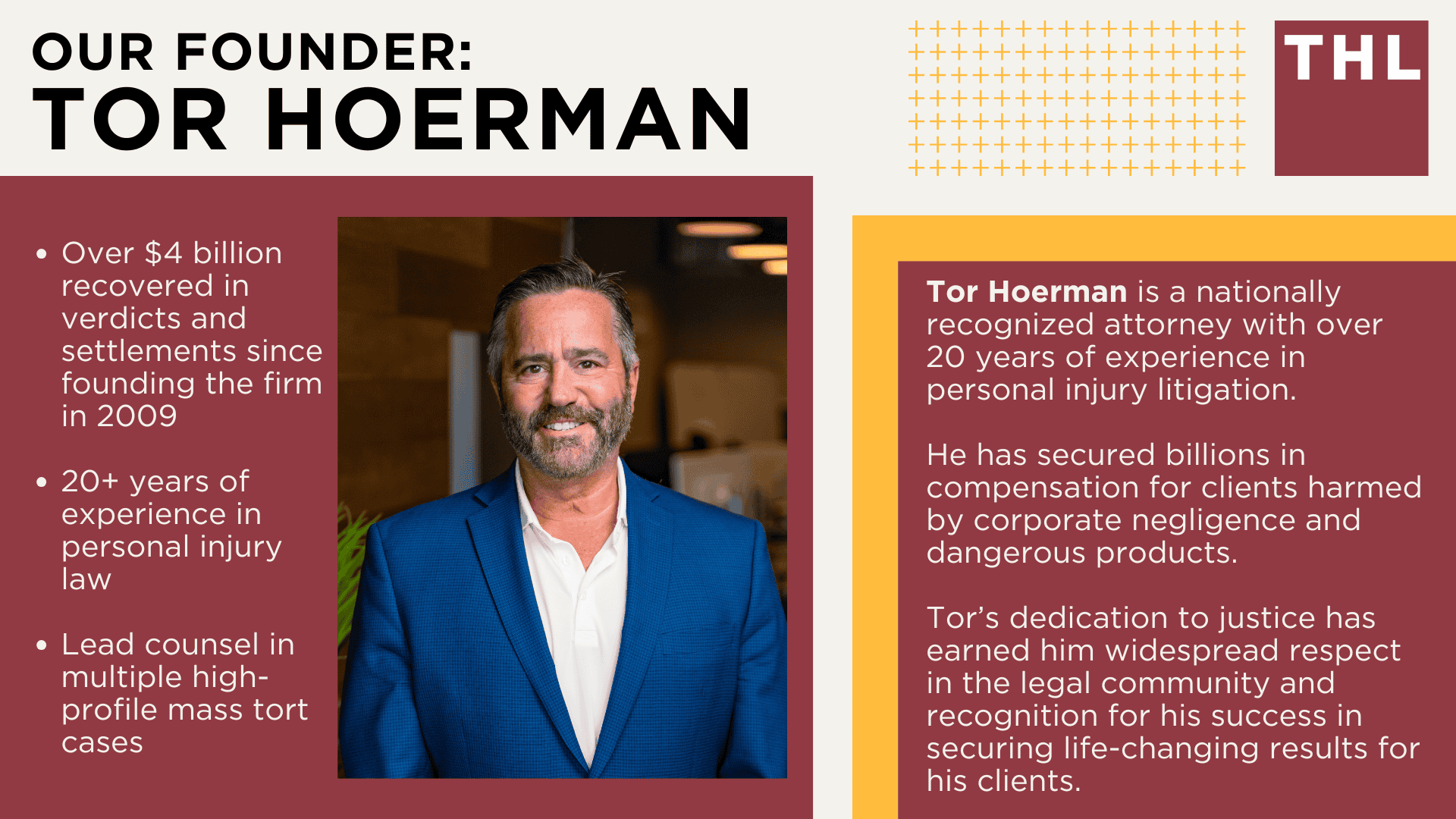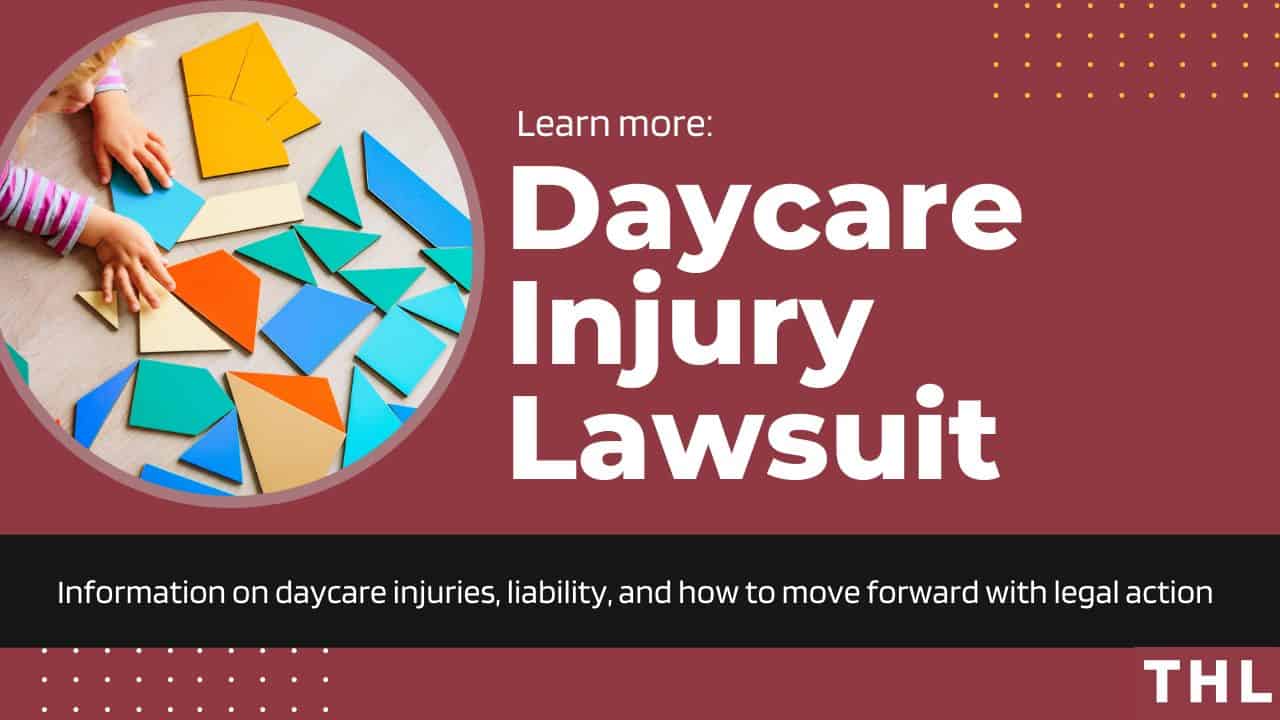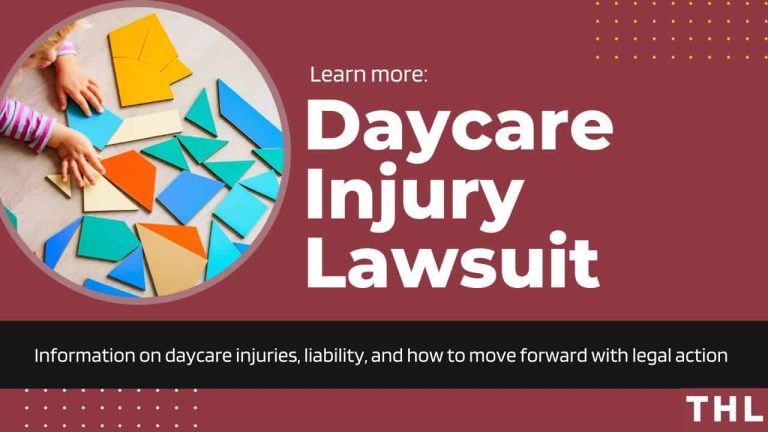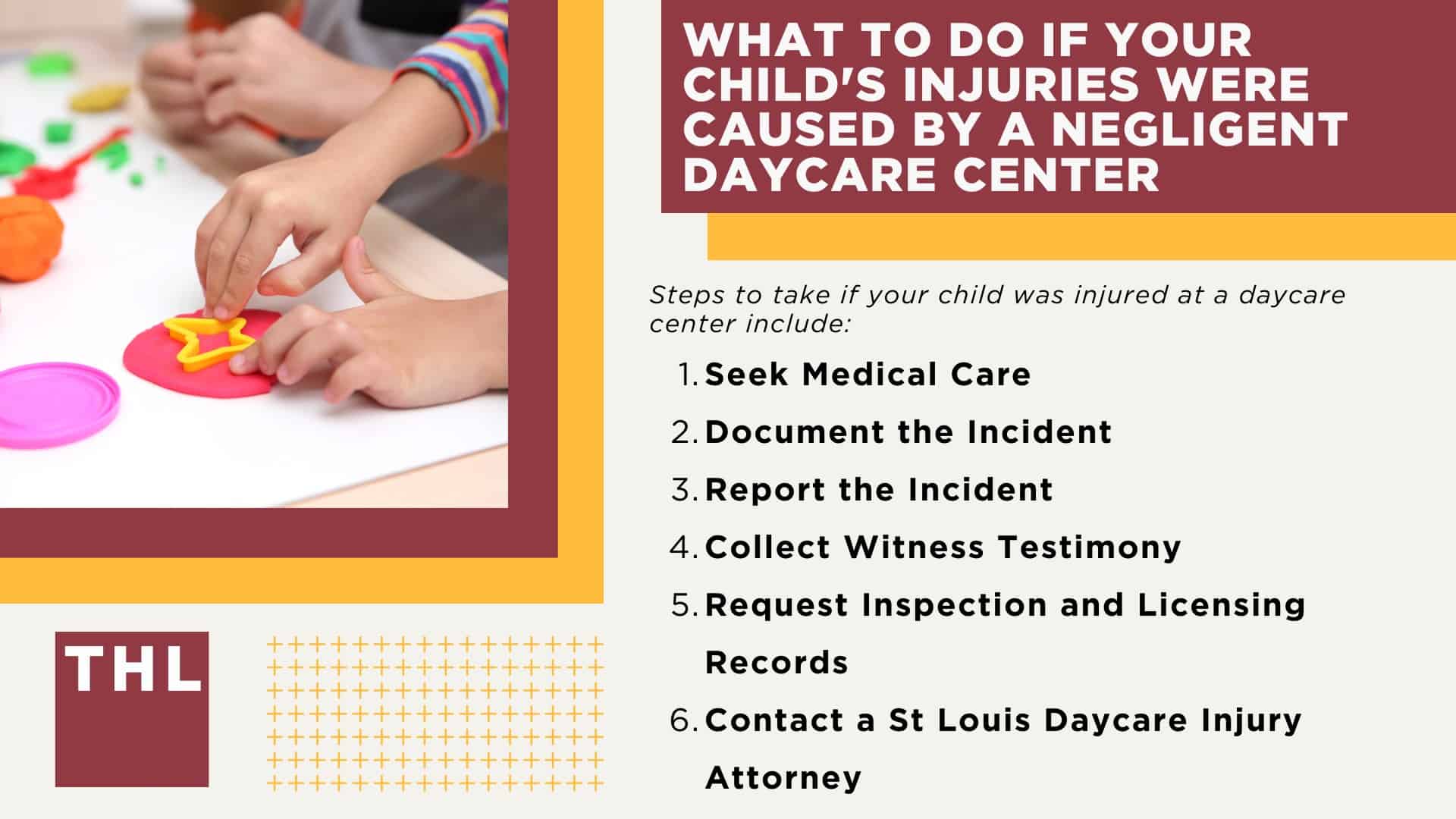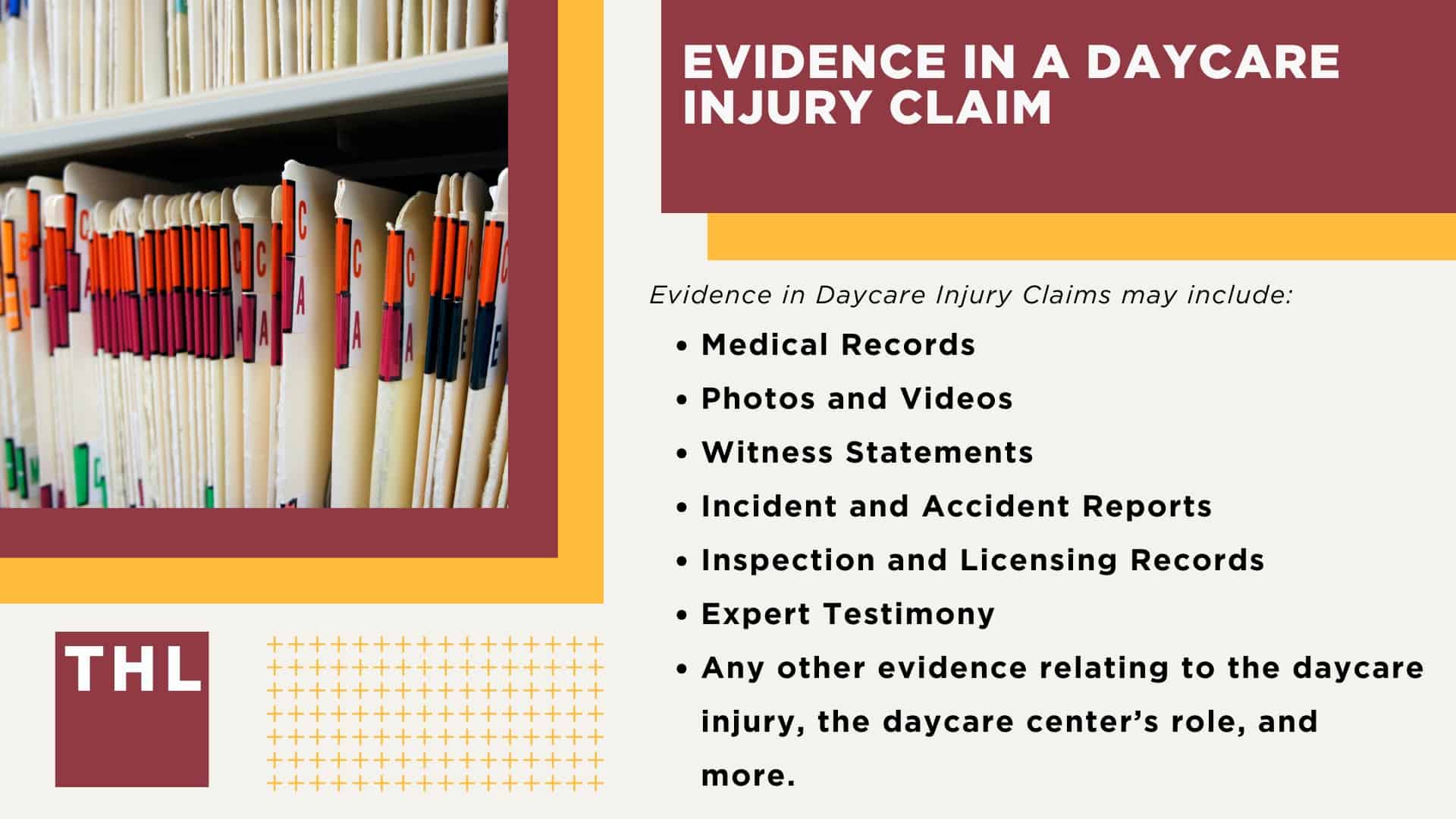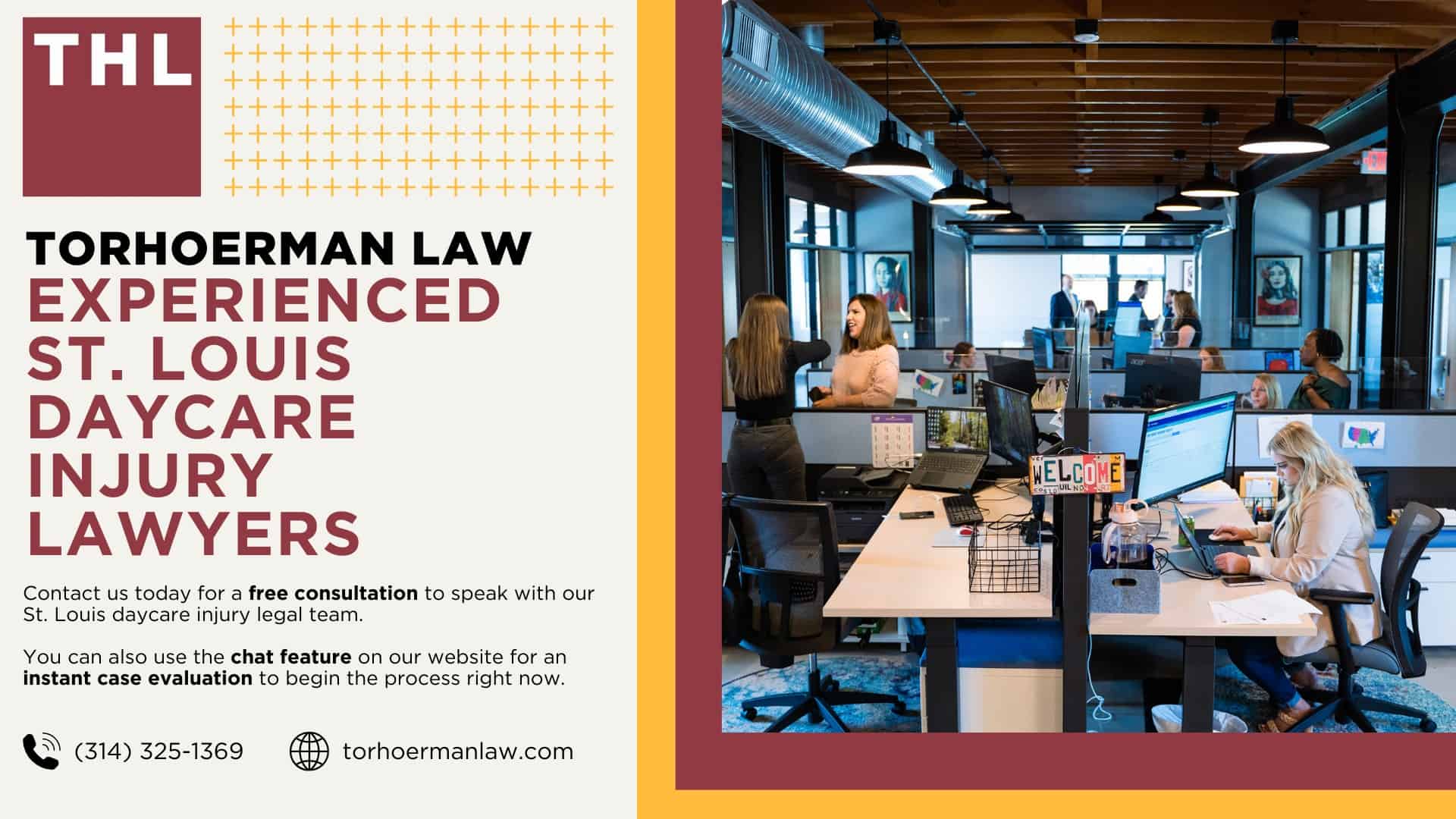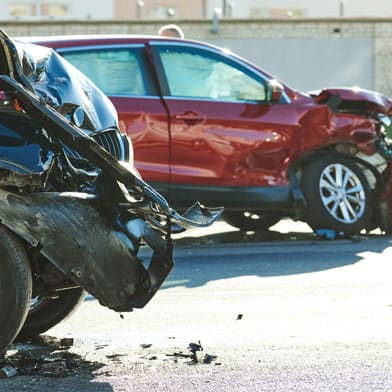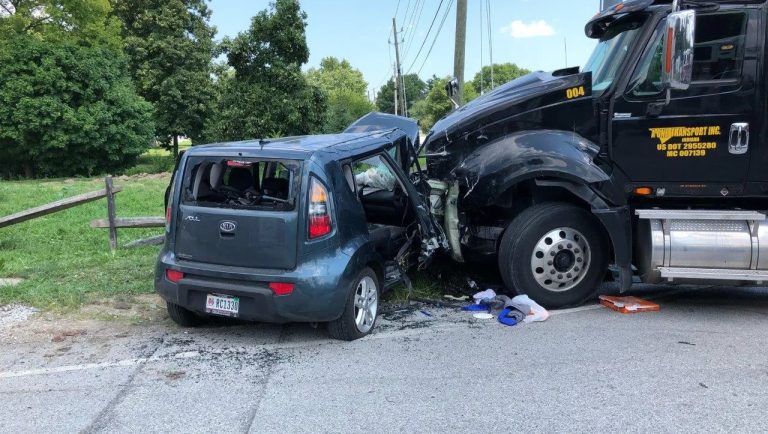According to the Center for American Progress, “almost one-quarter (23.4 percent) of children under the age of five are in some form of organized child care arrangement, which includes daycare centers, nurseries, and preschools.”
With a large portion of the country’s children enrolled, daycare accidents are not uncommon.
Daycare facilities are responsible for maintaining a safe environment for children, but accidents can still occur due to various factors, including inadequate supervision, unsafe equipment, or poorly trained staff.
When these injuries result from preventable causes, families may have grounds for a legal claim.
Understanding the types and causes of common daycare injuries helps parents identify risks and take action to protect their children’s safety.
Injuries in daycare settings can vary from minor incidents to severe harm, often depending on the age of the children, facility standards, and the training of caregivers.
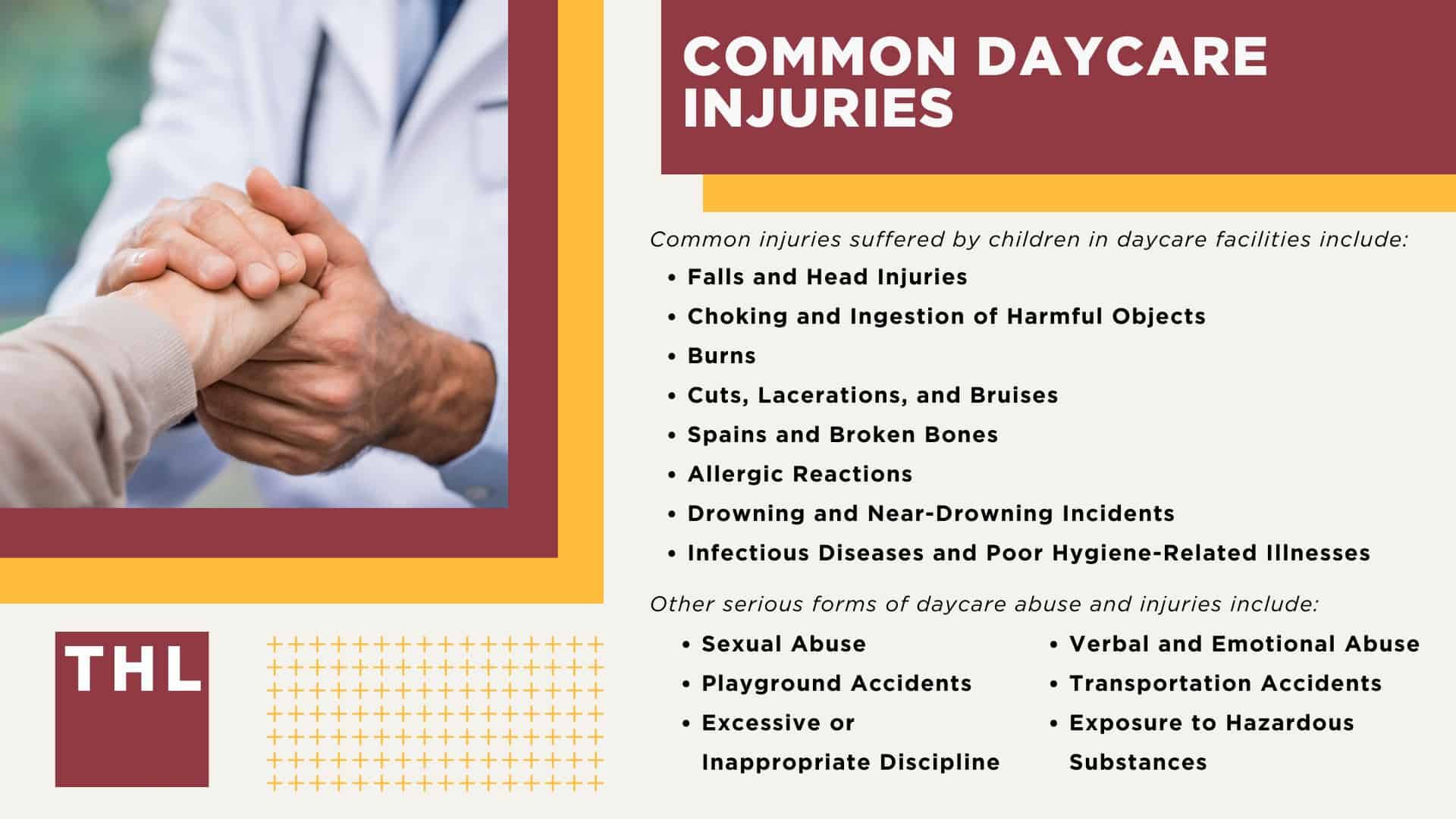
Common daycare injuries and their causes include:
- Falls and Head Injuries: Falls are one of the most common daycare injuries, often occurring due to inadequate supervision, slippery floors, or improperly maintained playground equipment. Head injuries from falls can range from mild concussions to severe traumatic brain injuries, especially for younger children who are more prone to losing balance.
- Choking and Ingestion of Harmful Objects: Young children are naturally curious and may place objects in their mouths. Choking hazards are common in daycare settings that don’t adhere to proper safety measures, such as keeping small toys, coins, or other objects out of reach. Ingestion of toxic substances, like cleaning supplies left unattended, also poses serious health risks.
- Burns: Burns can occur from exposure to hot surfaces, foods, or liquids. Daycares that do not secure kitchen areas, hot water faucets, or radiators properly put children at risk. Burns may also result from sun exposure if children are left outside without sunscreen or shade.
- Cuts, Lacerations, and Bruises: These injuries often result from sharp objects, broken toys, or furniture with exposed edges. Facilities that don’t regularly inspect and repair their equipment or furniture may be held responsible if these items cause injury to children.
- Sprains and Broken Bones: Rough play, lack of supervision, or overcrowded play areas can lead to sprains or fractures. Climbing structures, slides, and other playground equipment, if not age-appropriate or properly supervised, increase the risk of falls and impact injuries.
- Allergic Reactions: Allergic reactions may happen if daycare staff fails to monitor children’s food allergies or do not have emergency plans in place. Cross-contamination, accidental ingestion of allergens, and inadequate response to an allergic reaction can lead to serious medical emergencies.
- Drowning or Near-Drowning Incidents: If a daycare has a pool or nearby water source, strict supervision and safety measures are essential. Drowning incidents, even in small amounts of water, can occur if children are left unsupervised or barriers are not adequately secured.
- Infectious Diseases and Poor Hygiene-Related Illnesses: Inadequate hygiene practices, such as failing to wash hands, clean toys, or sanitize surfaces, can spread infections quickly among children. This can lead to illnesses ranging from colds and flu to more severe infections, especially in environments that don’t adhere to strict health protocols.
Sexual Abuse at Daycare Facilities
Daycares are unfortunately places where sexual abuse can occur.
Sexual abuse in daycare settings is a severe violation of trust, often involving inappropriate contact or behavior by staff or other individuals in the facility.
Warning signs may include sudden behavioral changes, withdrawal, or physical symptoms.
It is essential for daycare providers to implement strict background checks and monitoring procedures to protect children from such harm.
The non-profit Darkness to Light published statistics on sexual abuse in daycares, finding that of daycare employees who were found to be exhibiting abusive or negligent conduct, 20% committed sexual abuse.
Other Forms of Daycare Abuse and Daycare Related Injuries
Daycare facilities are expected to provide a secure and nurturing environment, but some forms of abuse and injury go beyond the typical accidents associated with childcare settings.
Unfortunately, certain types of harm—such as sexual abuse, extreme disciplinary actions, or other forms of maltreatment—occur in daycare environments and pose serious risks to children’s physical and emotional health.
Awareness of these risks allows families to be vigilant about any signs of inappropriate behavior or injury.
Other forms of daycare abuse and injuries include:
- Outdoor and Playground Injuries: While playgrounds can foster physical development, improper equipment maintenance, lack of supervision, or hazardous surfaces significantly increase the risk of serious injuries, such as fractures or head injuries. Safety measures like padding under equipment and age-appropriate structures are critical to prevent these injuries.
- Excessive or Inappropriate Discipline: Some facilities may use inappropriate disciplinary methods, such as physical restraint, isolation, or even verbal abuse, which can cause both physical and emotional harm to children. Daycare centers must follow state guidelines on discipline, ensuring that any actions taken are safe, age-appropriate, and do not cause undue stress or harm to children.
- Verbal and Emotional Abuse: Emotional abuse may involve yelling, intimidation, shaming, or other negative interactions that impact a child’s sense of security. Such treatment can lead to anxiety, behavioral changes, and long-term emotional effects, making it vital for daycare staff to provide positive reinforcement and compassionate care.
- Unsafe Transportation Incidents: Injuries can occur during daycare-provided transportation if proper safety precautions, such as using child-appropriate car seats, are not followed. Children may also be left unsupervised in daycare vans or buses, leading to tragic incidents of heat exposure or abduction risks.
- Exposure to Hazardous Substances: Daycare facilities sometimes fail to properly secure toxic substances, such as cleaning agents, which can lead to accidental poisoning if children gain access to these materials. Proper storage and regular facility inspections help prevent these dangerous exposures.
Each of these issues highlights the importance of rigorous safety practices and vigilant supervision in daycare settings.
Families concerned about these or any other forms of abuse or injury should consult with a lawyer to understand their options for safeguarding their children’s rights and seeking accountability from responsible parties.
Daycare Injuries in St. Louis
In 2012, the St. Louis Post Dispatch reported in a four-year study of daycare facilities that 41 of 45 deaths in child care occurred in unlicensed homes and facilities.
In March 2019, two St. Louis employees were charged with child abuse for incidents that were caught on tape.
In one incident, one woman was recorded throwing a three-year-old across a room.
In the other incident, another employee was charged with abuse after injuring a 4-year-old.
Both incidents occurred at Brighter Daycare and Preschool.

